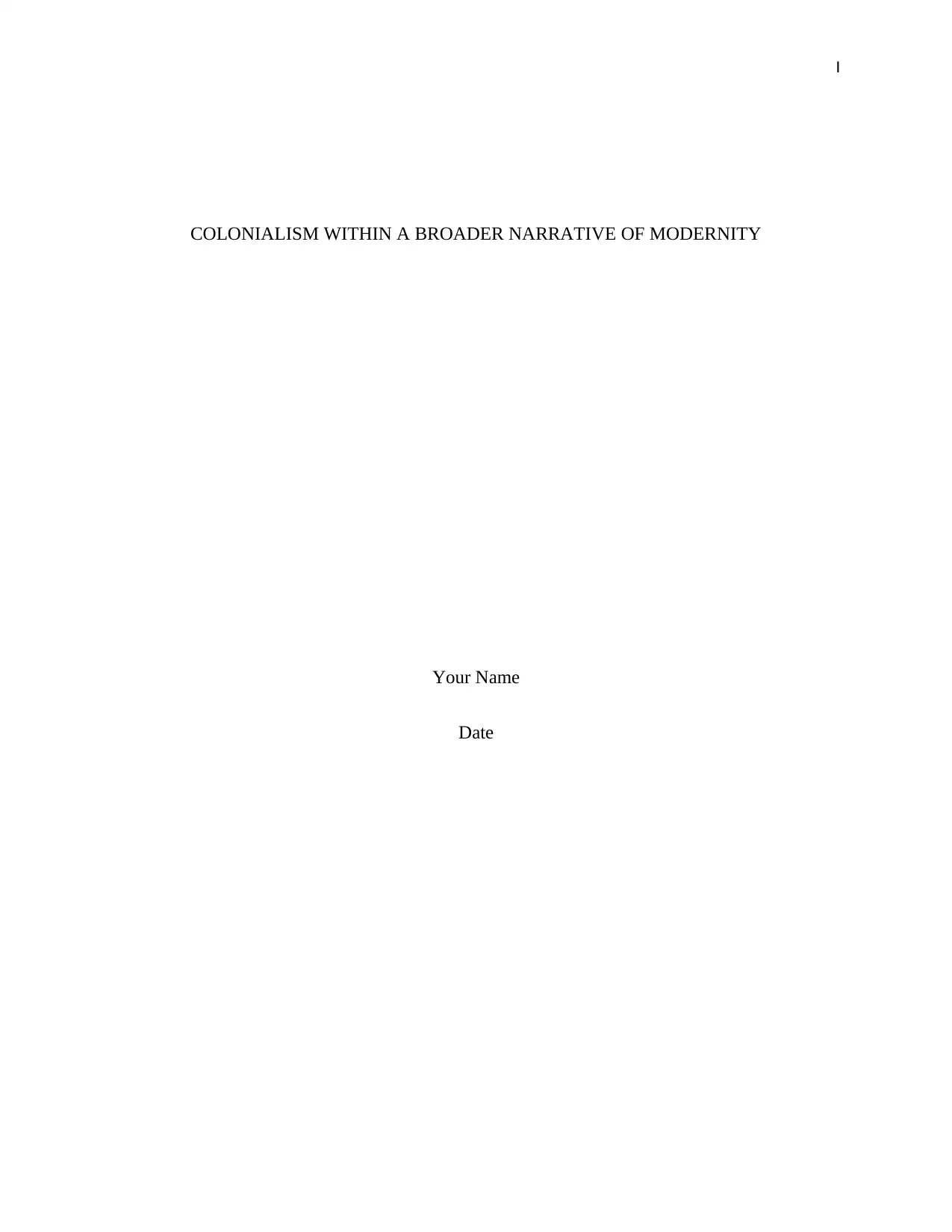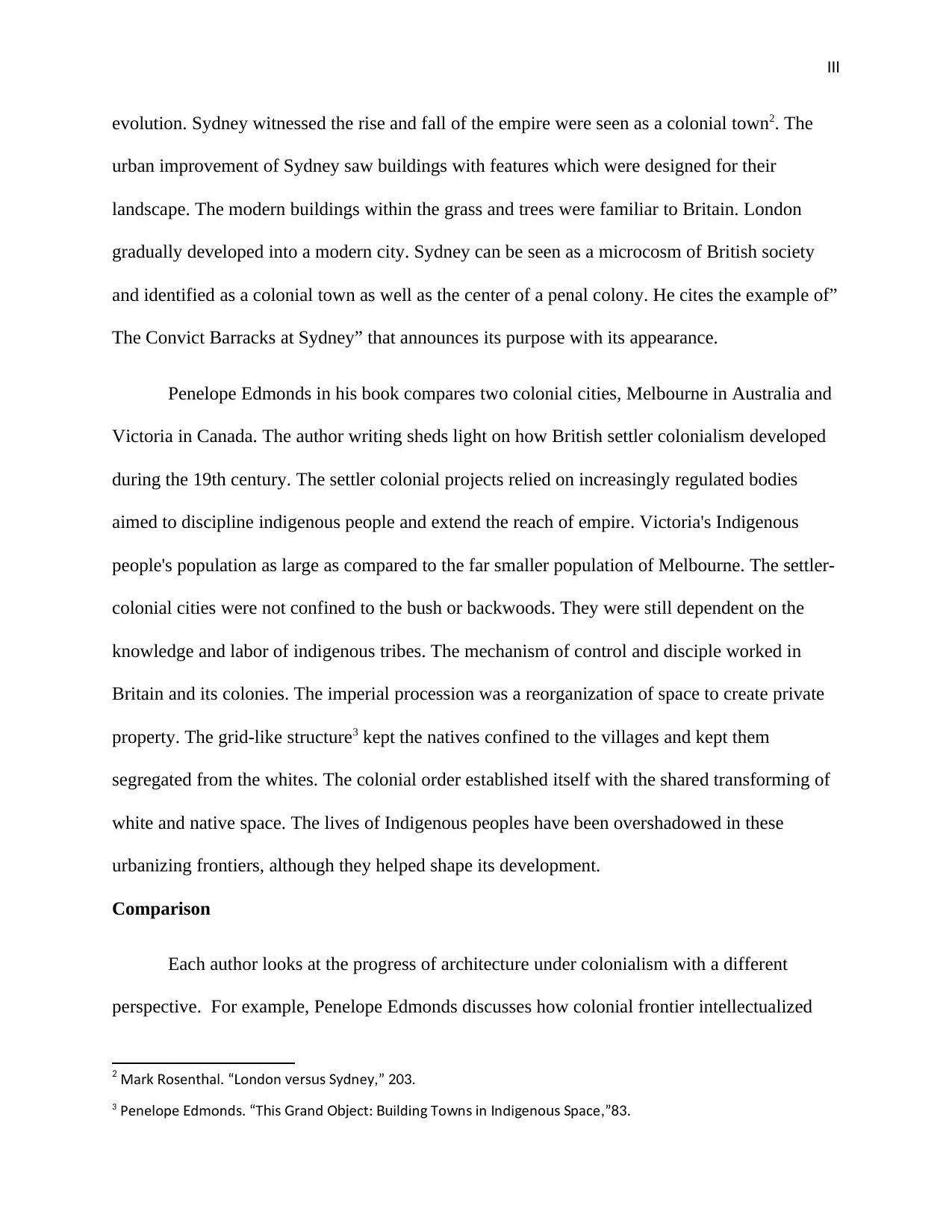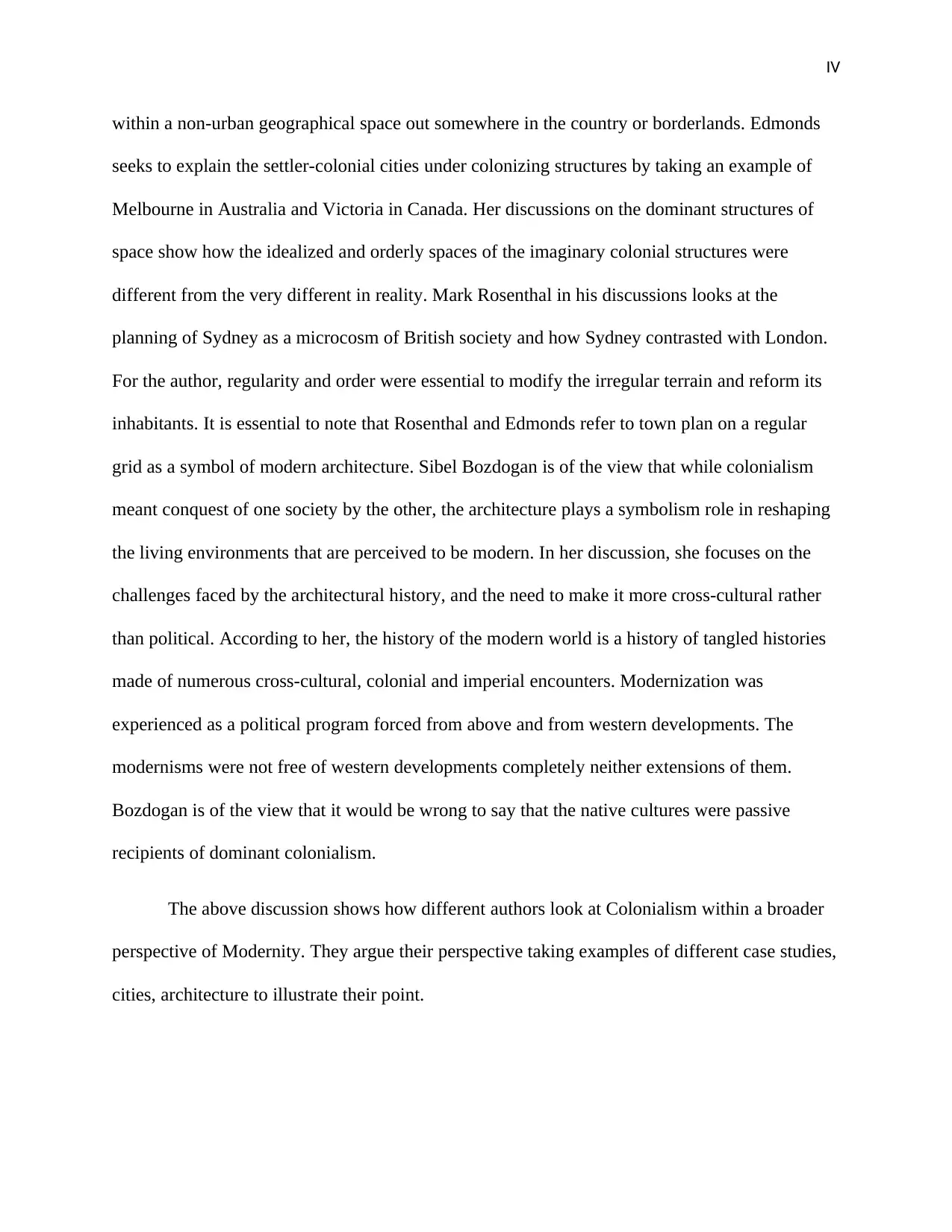ARC2402 Mid-Semester Essay: Colonialism's Role in Modernity
VerifiedAdded on 2023/06/08
|5
|1042
|447
Essay
AI Summary
This essay critically analyzes how various authors situate Colonialism within a broader narrative of Modernity, focusing on its impact on architectural development and urban planning. The analysis draws upon the works of Sibel Bozdogan, Mark Rosenthal, and Penelope Edmonds, each offering distinct perspectives on the relationship between colonial practices and modern architectural forms. Bozdogan addresses the challenges of cross-cultural architectural history and the influence of colonialism on reshaping living environments. Rosenthal examines the urban planning of Sydney as a microcosm of British society, contrasting it with London. Edmonds explores the development of settler-colonial cities, comparing Melbourne and Victoria, and the imposition of colonial order through space and infrastructure. The essay highlights how the authors employ case studies and architectural examples to illustrate the interplay between colonialism and the shaping of modern society, emphasizing the political, social, and cultural dimensions of this complex relationship, as well as the challenges faced in understanding colonial architecture. The essay is based on the ARC2402 course mid-semester essay assignment.
1 out of 5









![[object Object]](/_next/static/media/star-bottom.7253800d.svg)